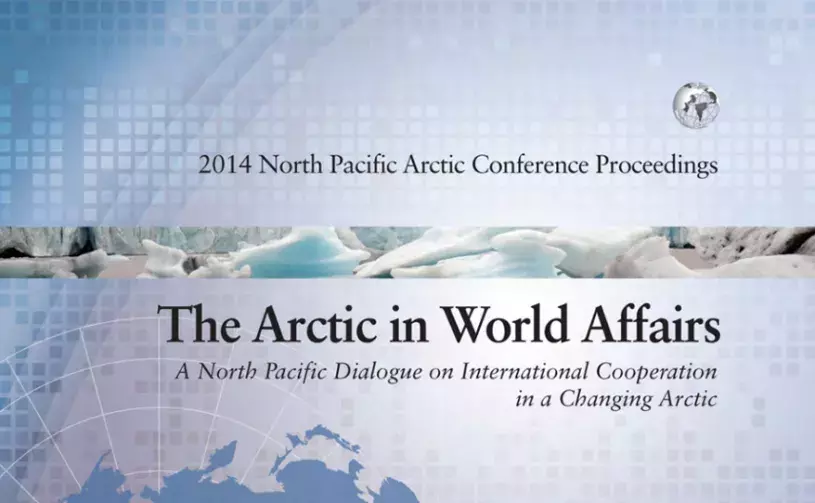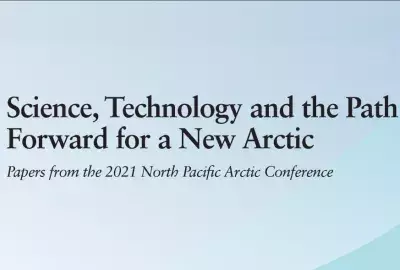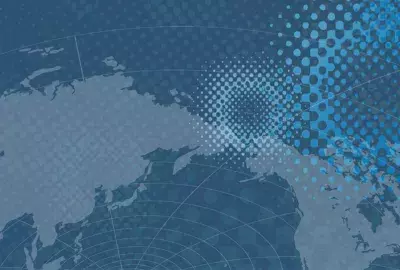Error message

The Arctic in World Affairs: A North Pacific Dialogue on International Cooperation in a Changing Arctic addresses future cooperation in five areas: patterns of Arctic investment, national Arctic strategies, Arctic state/non-Arctic state engagement, innovations applicable to the Arctic and indigenous responses to Arctic development. Bringing together prominent experts from the three North Pacific Arctic coastal states (Canada, Russia, and the United States) and three leading North Pacific non-Arctic states (China, Japan, and Korea), the book goes beyond generalities; it attempts to identify and evaluate the effectiveness of innovative measures that will contribute to maintaining the Arctic as a zone of peace and promoting sustainable development in this region.
Regarding patterns of Arctic investment, the book addresses Arctic natural resource development and linkages to global markets using Arctic shipping as a prominent example, but also taking a broader perspective on business and the investment environment in the Arctic.
On national Arctic strategies, the book compares the national Arctic strategies of key Arctic states (Canada, Russia, and the U.S.) and those of key non-Arctic states (China, Japan, Korea), focusing on the main themes of these strategies and prospects for their implementation. Comparing national Arctic strategies will provide an understanding of the driving forces and interests behind Arctic policy formulation.
In the case of Arctic state/non-Arctic state engagement, the book examines the efforts of non-Arctic states to play a role in addressing Arctic issues. The book briefly identifies areas of interest and priority issues for China, Japan, and Korea, and will review any previous experiences with the Arctic Council working groups (AMAP, PAME, EPPR, SDWG, CAFF and ACAP) and other subsidiary bodies.
On innovations applicable to the Arctic, the book reviews developments in the area of R&D and explore their implications for the development of Arctic infrastructure.
Regarding indigenous responses to Arctic development, the book devotes special attention to enhancing the understanding of non-Arctic actors regarding Arctic peoples and exploring opportunities for cooperation across this divide. Now that Korea, Japan and China are Arctic Council non-Arctic state observers, the new reality for these nations is that there are six indigenous groups sitting at the table with the Arctic states as Permanent Participants (and most are joining in the work of the technical working groups).
The book attempts to fill gaps in knowledge regarding the maritime Arctic, identifying remaining uncertainties, and developing policy innovations that can promote peaceful and sustainable uses of Arctic resources in the future.
The Arctic in World Affairs: A North Pacific Dialogue on International Cooperation in a Changing Arctic addresses future cooperation in five areas: patterns of Arctic investment, national Arctic strategies, Arctic state/non-Arctic state engagement, innovations applicable to the Arctic and indigenous responses to Arctic development. Bringing together prominent experts from the three North Pacific Arctic coastal states (Canada, Russia, and the United States) and three leading North Pacific non-Arctic states (China, Japan, and Korea), the book goes beyond generalities; it attempts to identify and evaluate the effectiveness of innovative measures that will contribute to maintaining the Arctic as a zone of peace and promoting sustainable development in this region.
Regarding patterns of Arctic investment, the book addresses Arctic natural resource development and linkages to global markets using Arctic shipping as a prominent example, but also taking a broader perspective on business and the investment environment in the Arctic.
On national Arctic strategies, the book compares the national Arctic strategies of key Arctic states (Canada, Russia, and the U.S.) and those of key non-Arctic states (China, Japan, Korea), focusing on the main themes of these strategies and prospects for their implementation. Comparing national Arctic strategies will provide an understanding of the driving forces and interests behind Arctic policy formulation.
In the case of Arctic state/non-Arctic state engagement, the book examines the efforts of non-Arctic states to play a role in addressing Arctic issues. The book briefly identifies areas of interest and priority issues for China, Japan, and Korea, and will review any previous experiences with the Arctic Council working groups (AMAP, PAME, EPPR, SDWG, CAFF and ACAP) and other subsidiary bodies.
On innovations applicable to the Arctic, the book reviews developments in the area of R&D and explore their implications for the development of Arctic infrastructure.
Regarding indigenous responses to Arctic development, the book devotes special attention to enhancing the understanding of non-Arctic actors regarding Arctic peoples and exploring opportunities for cooperation across this divide. Now that Korea, Japan and China are Arctic Council non-Arctic state observers, the new reality for these nations is that there are six indigenous groups sitting at the table with the Arctic states as Permanent Participants (and most are joining in the work of the technical working groups).
The book attempts to fill gaps in knowledge regarding the maritime Arctic, identifying remaining uncertainties, and developing policy innovations that can promote peaceful and sustainable uses of Arctic resources in the future.







